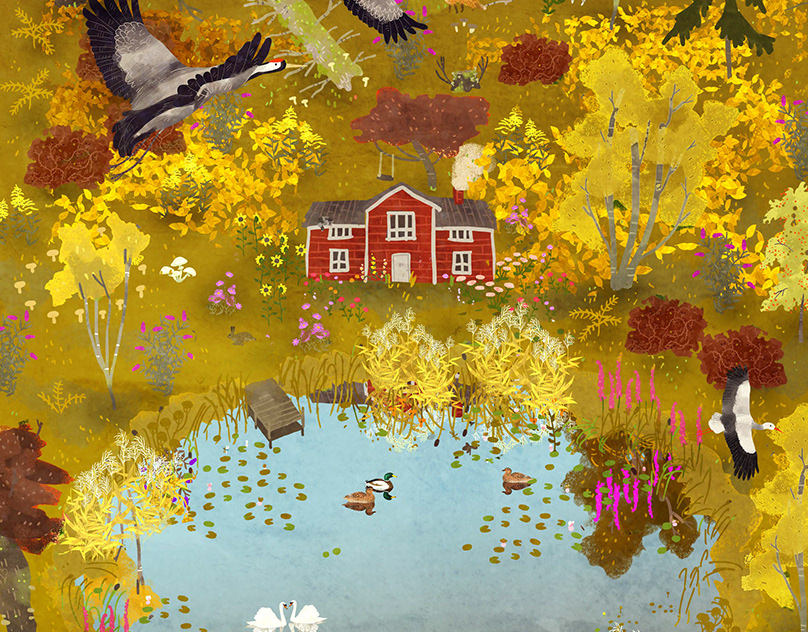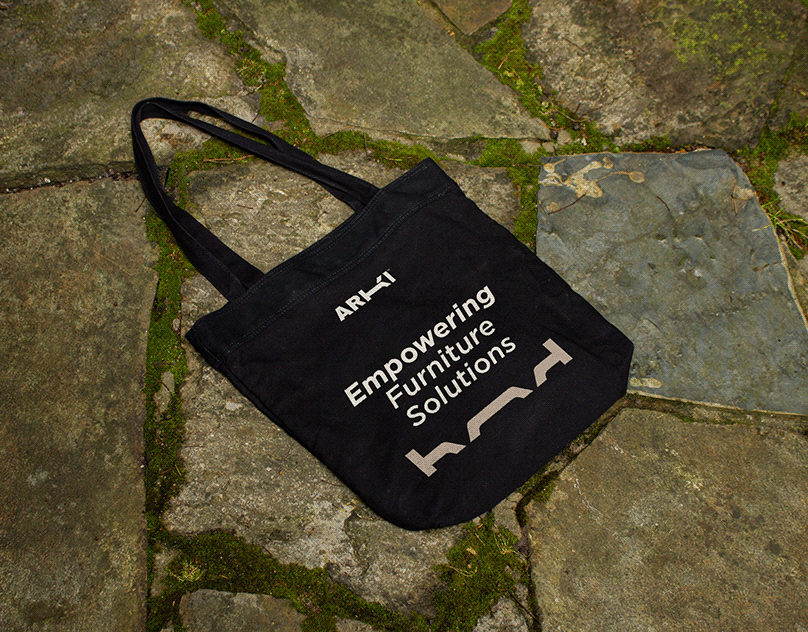MHAD: Modular Hybrid Agriculture Drone
Design by Alexander Kaula under the guidance of Prof. Tom Philipps
Entwurf von Alexander Kaula unter Betreuung von Prof. Tom Philipps
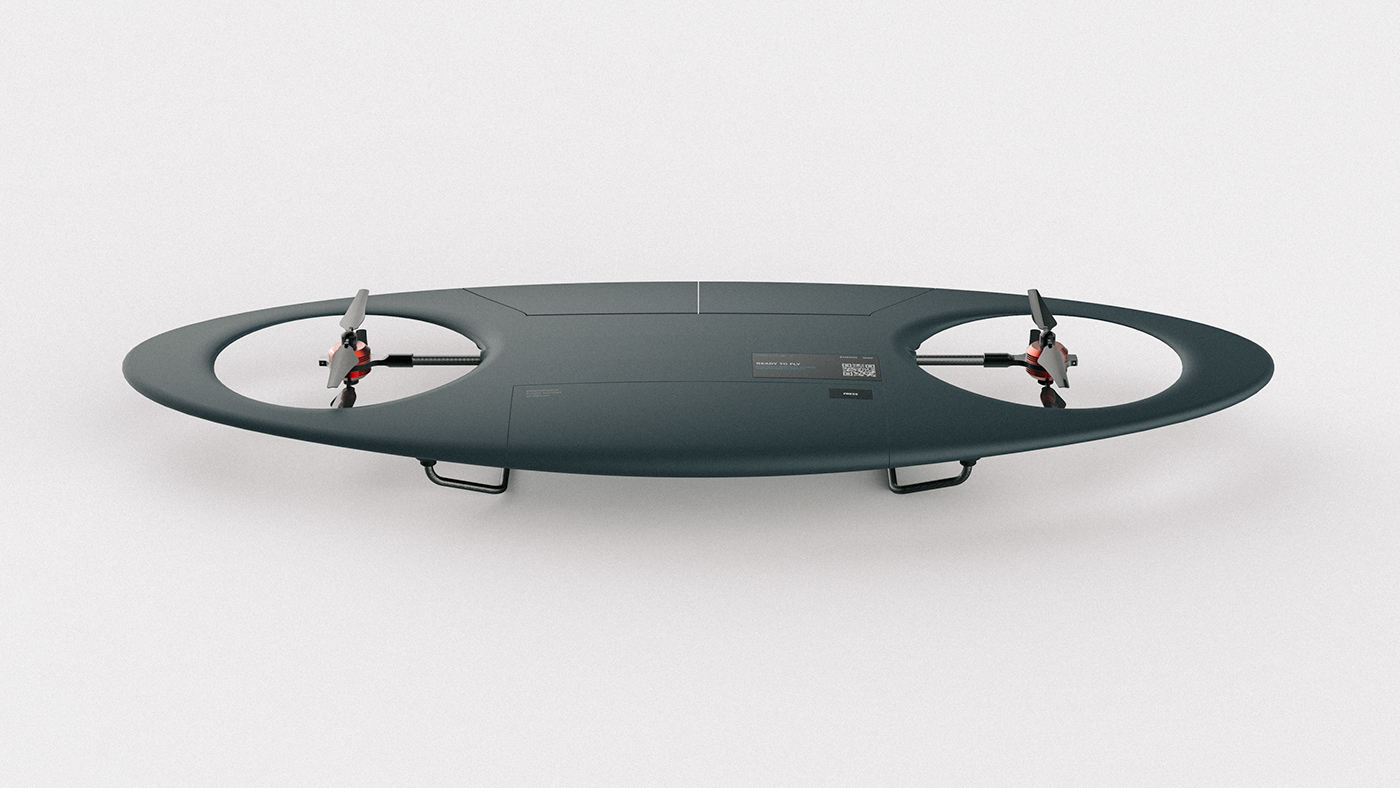
Research
Recherche
In 2100, 11.2 billion people will live on Earth. One of the big challenges for so many people will be food production. Agricultural land must be used more effectively and yields must increase. At the same time, insecticides and over-fertilization must be avoided in order to counteract the death of insects, for example.
One promising method is precision agriculture. This method uses multi-band sensors and thermal cameras to analyse the fields and respond more precisely to the needs of the plants. Initially, satellites and smaller aircraft were used to deliver the image data. Interest in agriculture drones has been growing since 2014 and the US market is estimated at over USD 200 million by 2022.
Current solutions are based on either multi-copter or aircraft solutions. Multicopters have the advantage of being able to fly over the object slowly. Especially with complex terrains this platform can help. However, this type of flying is not very efficient and the operating time is therefore limited. The design of the aircraft with wings is more suitable for longer operating times and thus the capturing of larger fields. However, due to the high flight speed, the data is not as accurate as with multicopters.
One promising method is precision agriculture. This method uses multi-band sensors and thermal cameras to analyse the fields and respond more precisely to the needs of the plants. Initially, satellites and smaller aircraft were used to deliver the image data. Interest in agriculture drones has been growing since 2014 and the US market is estimated at over USD 200 million by 2022.
Current solutions are based on either multi-copter or aircraft solutions. Multicopters have the advantage of being able to fly over the object slowly. Especially with complex terrains this platform can help. However, this type of flying is not very efficient and the operating time is therefore limited. The design of the aircraft with wings is more suitable for longer operating times and thus the capturing of larger fields. However, due to the high flight speed, the data is not as accurate as with multicopters.
Im Jahr 2100 werden 11,2 Milliarden Menschen auf der Erde leben. Eine der großen Hürden wird die Lebensmittelproduktion für so viele Menschen sein. Die landwirtschaftlich genutzten Flächen müssen effektiver genutzt werden und die Erträge müssen steigen. Gleichzeitig müssen Insektizide und Überdüngerung vermieden werden um z.B. dem Insektensterben entgegenzuwirken.
Eine erfolgsversprechende Methode ist das "precision agriculture". Bei dieser Methode werden Mehrband-Sensoren und Thermalkameras eingesetzt um die Felder zu analysieren und genauer auf die Bedürfnisse der Pflanzen einzugehen. Zunächst wurden Satelliten und kleinere Flugzeuge eingesetzt um die Bilddaten zu liefern. Seit 2014 steigt das Interesse an "agriculture drones" und der Markt in den USA wird für das Jahr 2022 auf über 200 millionen USD geschätzt.
Aktuelle Lösungen basieren entweder auf Multicopter- oder auf Flugzeug-Lösungen. Multicopter haben den Vorteil, dass diese ein langsames Überfliegen des Objekts bewerkstelligen können. Gerade bei komplexen Terrains kann diese Platform helfen. Jedoch ist diese Art des Fliegens nicht sehr effizient und die Betriebsdauer ist somit eingeschränkt. Für längere Betriebszeiten und somit eine Erfassung von größeren Feldern ist die Bauart des Flugzeuges mit Tragflächen besser geeignet. Jedoch sind die Daten durch die hohe Fluggeschwindigkeit nicht so genau wie bei Multicoptern.
Eine erfolgsversprechende Methode ist das "precision agriculture". Bei dieser Methode werden Mehrband-Sensoren und Thermalkameras eingesetzt um die Felder zu analysieren und genauer auf die Bedürfnisse der Pflanzen einzugehen. Zunächst wurden Satelliten und kleinere Flugzeuge eingesetzt um die Bilddaten zu liefern. Seit 2014 steigt das Interesse an "agriculture drones" und der Markt in den USA wird für das Jahr 2022 auf über 200 millionen USD geschätzt.
Aktuelle Lösungen basieren entweder auf Multicopter- oder auf Flugzeug-Lösungen. Multicopter haben den Vorteil, dass diese ein langsames Überfliegen des Objekts bewerkstelligen können. Gerade bei komplexen Terrains kann diese Platform helfen. Jedoch ist diese Art des Fliegens nicht sehr effizient und die Betriebsdauer ist somit eingeschränkt. Für längere Betriebszeiten und somit eine Erfassung von größeren Feldern ist die Bauart des Flugzeuges mit Tragflächen besser geeignet. Jedoch sind die Daten durch die hohe Fluggeschwindigkeit nicht so genau wie bei Multicoptern.







Project Progress
Projektverlauf
The focus of my design was on the symbiosis between the agile flight characteristics of the Multicopter and the efficient flight with wings.
The design process was based on the CESAR method, which we got to know during the design course.
The idea finding was supported during the research by a sketch based form discovery. Furthermore, 1:1 models were made of foam to be able to assess the design in three-dimensional space.
The design process was based on the CESAR method, which we got to know during the design course.
The idea finding was supported during the research by a sketch based form discovery. Furthermore, 1:1 models were made of foam to be able to assess the design in three-dimensional space.
Der Fokus meines Entwurfs lag auf der Symbiose zwischen den agilen Flugeigenschaften des Multicopters sowie dem effizienten Flug mit Flügeln.
Der Entwurfsprozess basierte auf der CESAR-Methode, welche wir im Rahmen des Entwurfskurses kennen gelernt haben.
Der Entwurfsprozess basierte auf der CESAR-Methode, welche wir im Rahmen des Entwurfskurses kennen gelernt haben.
Die Ideenfindung wurde während der Recherche durch eine Skizzen basierte Formfindung unterstützt. Des Weiteren wurden 1:1 Modelle aus Schaum gefertigt um den Entwurf im dreidimensionalen Raum beurteilen zu können.
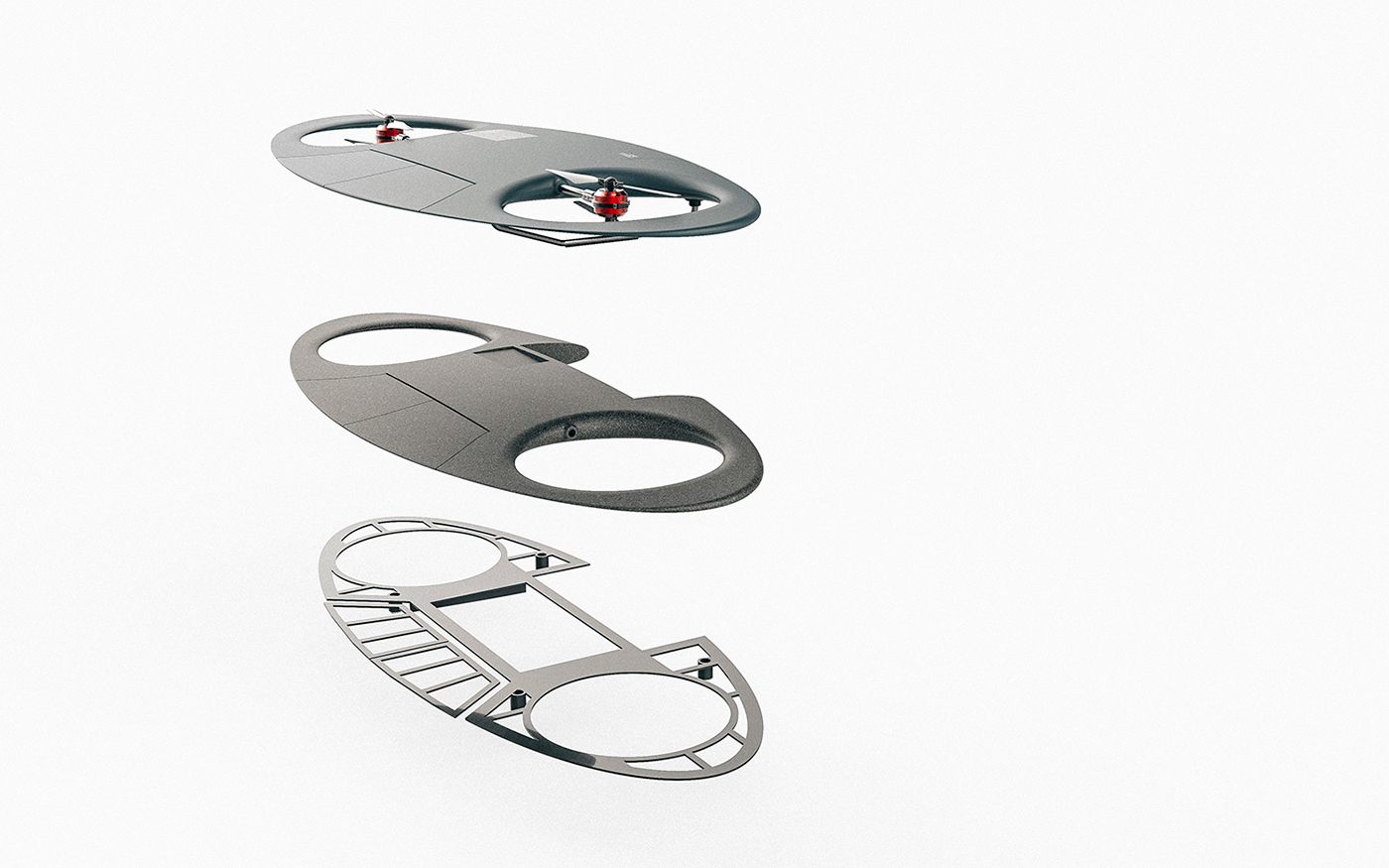



Result
Ergebnis
MHAD (Modular Hybrid Agriculture Drone) is a semi-autonomous hybrid UAV for use in agriculture, forestry and animal farming. The basic body consists of a flying wing profile in cross section and an oval in top view. Equipped with 3D and thermal cameras as well as hyperspectral sensors, MHAD measures the health status of plants and animals. In addition to the chrolophyll content and soil moisture, MAD can recognize different plant species.
The take-off weight with a 15.000mAh accumulator is 3200g. This allows an estimated flight time of 130 minutes. In hover mode, the UAV can hover on the spot for 30 minutes. In 70/30 hybrid operation, this results in a realistic operating time of 100 minutes. The accumulator space is designed for up to 30,000mAh.
This results in a realistic operating time of 160 minutes. In this way, a distance of more than 160 km can be flown and recorded during the flight time.
This results in a realistic operating time of 160 minutes. In this way, a distance of more than 160 km can be flown and recorded during the flight time.
On the top side there is a 5" touch colour E-Ink-display, which shows all important information. To establish a connection between the programmer and the UAV, a QR code is displayed and scanned. This is particularly useful for service providers who travel to the site with more than one MHAD and fly off several parcels a day.
The control of the UAV is changed according to the flight mode. In hover mode, both coaxial engines control the aircraft in three-dimensional space. Normally a so-called "Swatchplate" is needed for coaxial operation. This serves to pivot the upper rotor and thus to determine the flight direction. Students at the University of Pennsylvania have developed a system that does not require a "Swatchplate".
An impulse at the right moment causes the motor to turn faster/slower than the wingtip and thus moves the wing via joints to turn in, which changes the "angle of attack" of the wing. This changes the direction in which the UAV is moved. Thus the UAV can navigate in all directions in hover mode.
MHAD (Modular Hybrid Agriculture Drone) ist ein teilautonomes Hybrid-UAV für den Einsatz in der Land-, Forstwirtschaft sowie der Viehzucht. Der Grundkörper besteht im Querschnitt aus einem Nurflüglerprofil und aus der Draufsicht aus einem Oval. Ausgestattet mit 3D- und Thermal-Kameras sowie Hyperspektralsensoren, erfasst MHAD den Gesundheitszustand von Pflanzen und Tieren. Neben dem Chrolophylgehalt und der Bodenfeuchtigkeit kann MAD unterschiedliche Pflanzenarten erkennen.
Das Abfluggewicht liegt mit einem 15.000mAh Akkumulator bei 3200g. Dies ermöglicht eine geschätzte Flugzeit von 130 Minuten. Im Hoverbetrieb kann das UAV 30 Minuten lang auf der Stelle schweben. In einem 70/30 Hybridbetrieb kommt es so zu einer realistischen Einsatzzeit von 100 Minuten. Der Akkumulatorbauraum ist für bis zu 30.000mAh ausgelegt.
Dies führt zu einer realistischen Einsatzzeit von 160 Minuten. So kann in der Flugzeit eine Strecke von über 160km abgeflogen und erfasst werden.
Dies führt zu einer realistischen Einsatzzeit von 160 Minuten. So kann in der Flugzeit eine Strecke von über 160km abgeflogen und erfasst werden.
Auf der Oberseite befindet sich ein 5“ großes Touch-Farb-E-Ink-Display, welches alle wichtigen Informationen darstellt. Um eine Verbindung zwischen dem Programmierer und dem UAV aufzubauen wird ein QR-Code der auf dem Display dargestellt und gescannt. Dies ist vor allem für Dienstleister praktisch, die mit mehr als einer MHAD zum Einsatzort fahren und am Tag mehrere Parzellen abfliegen.
Die Steuerung des UAVs wird je nach Flugmodus verändert. Im Hovermodus steuern beide coaxialen Motoren das Fluggerät im dreidimensionalen Raum. Normalerweise wird für einen coaxialen Betrieb eine sogenannte „Swatchplate“ gebraucht. Diese dient dazu um den oberen Rotor zu Schwenken und somit die Flugrichtung zu bestimmen. Studenten der University of Pennsylvania hat hierzu einen Aufbau entwickelt, welcher ohne eine „Swatchplate“ auskommt.
Durch einen Impuls im richtigen Moment, dreht sich der Motor schneller/langsamer als die Flügelspitze und bewegt somit den Flügel über Gelenke zum Einlenken, was den „Angle of attack“ des Flügels ändert. Damit ändert sich die Richtung in die das UAV gezogen wird. Somit kann das UAV im Hoverzustand in alle Richtungen navigieren.
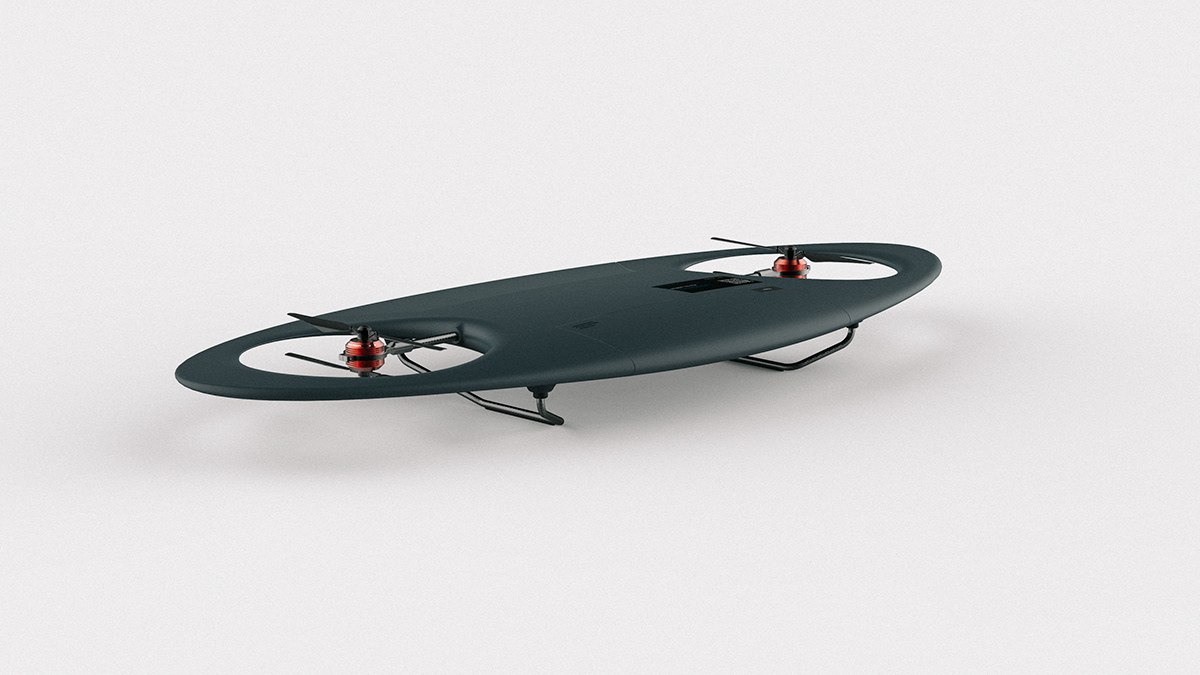
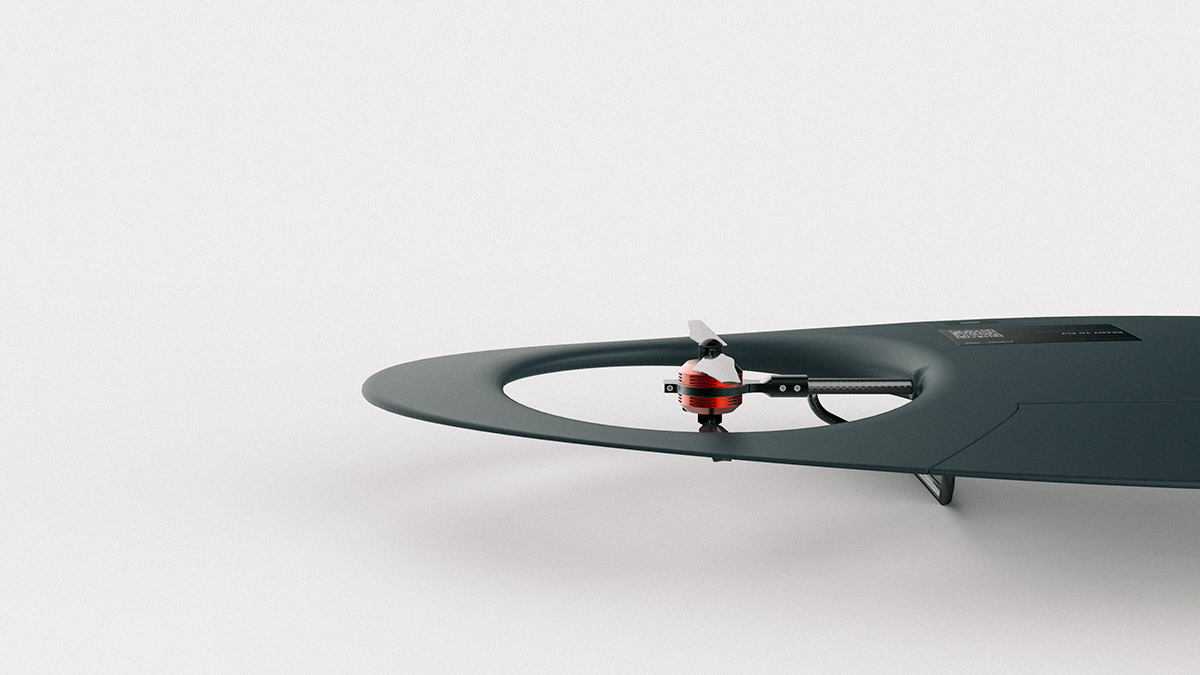
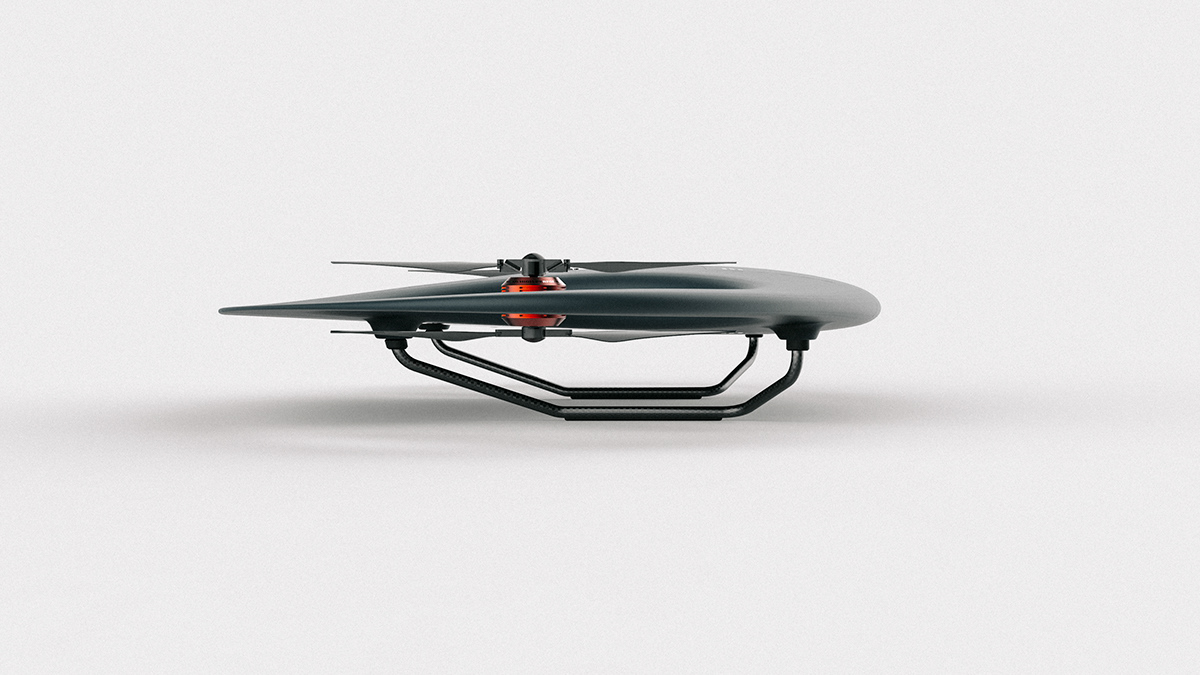
Documentation
Dokumentation
To document the project, a 130-page DIN A5 book was produced. In this book, the steps of motivation, analysis, design and definition of the project were demonstrated. The book was printed and bound by me.
Um das Projekt zu dokumentieren wurde ein 130 Seiten starkes Din A5 großes Buch angefertigt. In diesem Buch wurden die Schritte Motivation, Analyse, Design und Definition des Projekts aufgezeigt. Das Buch wurde von mir gedruckt und gebunden.













